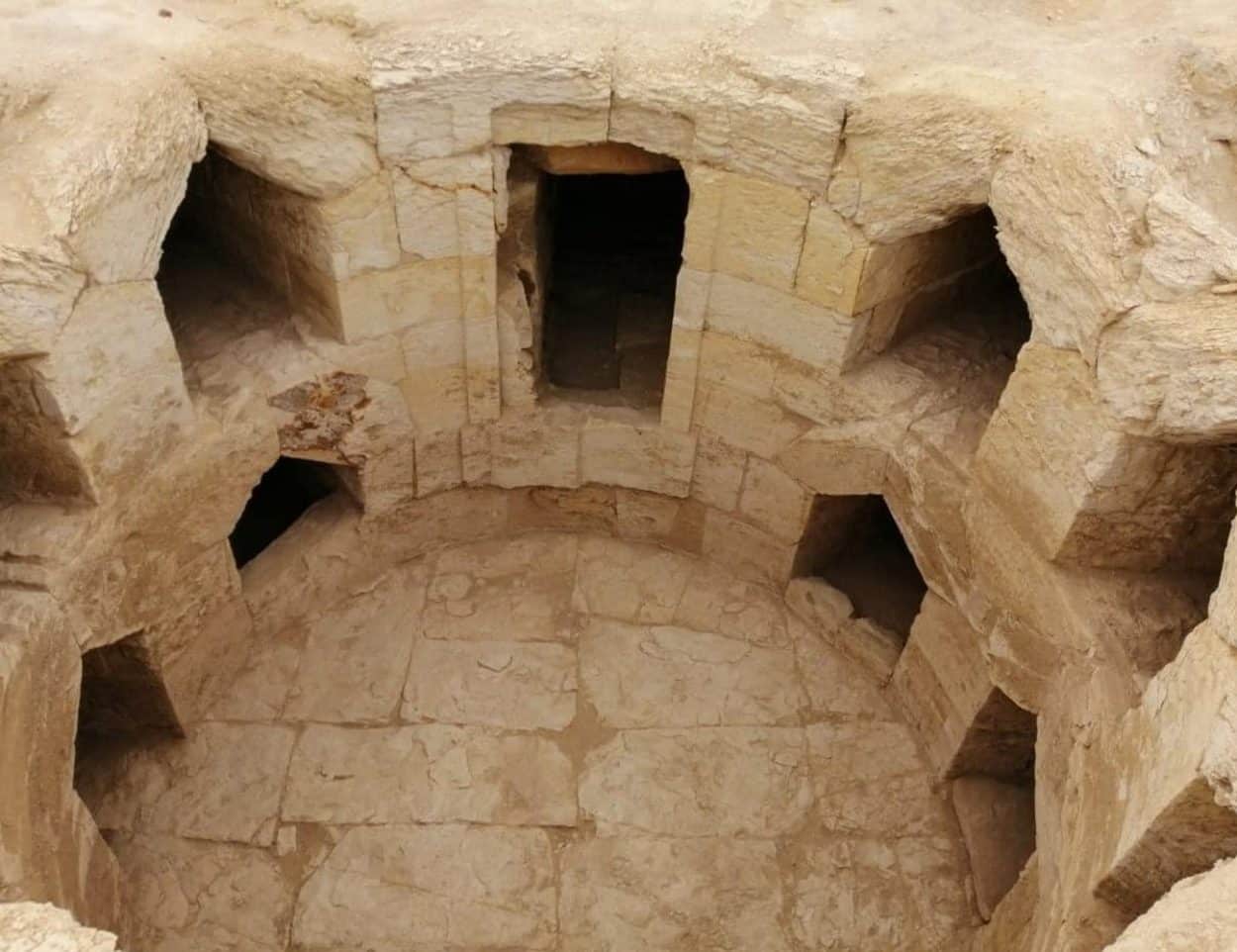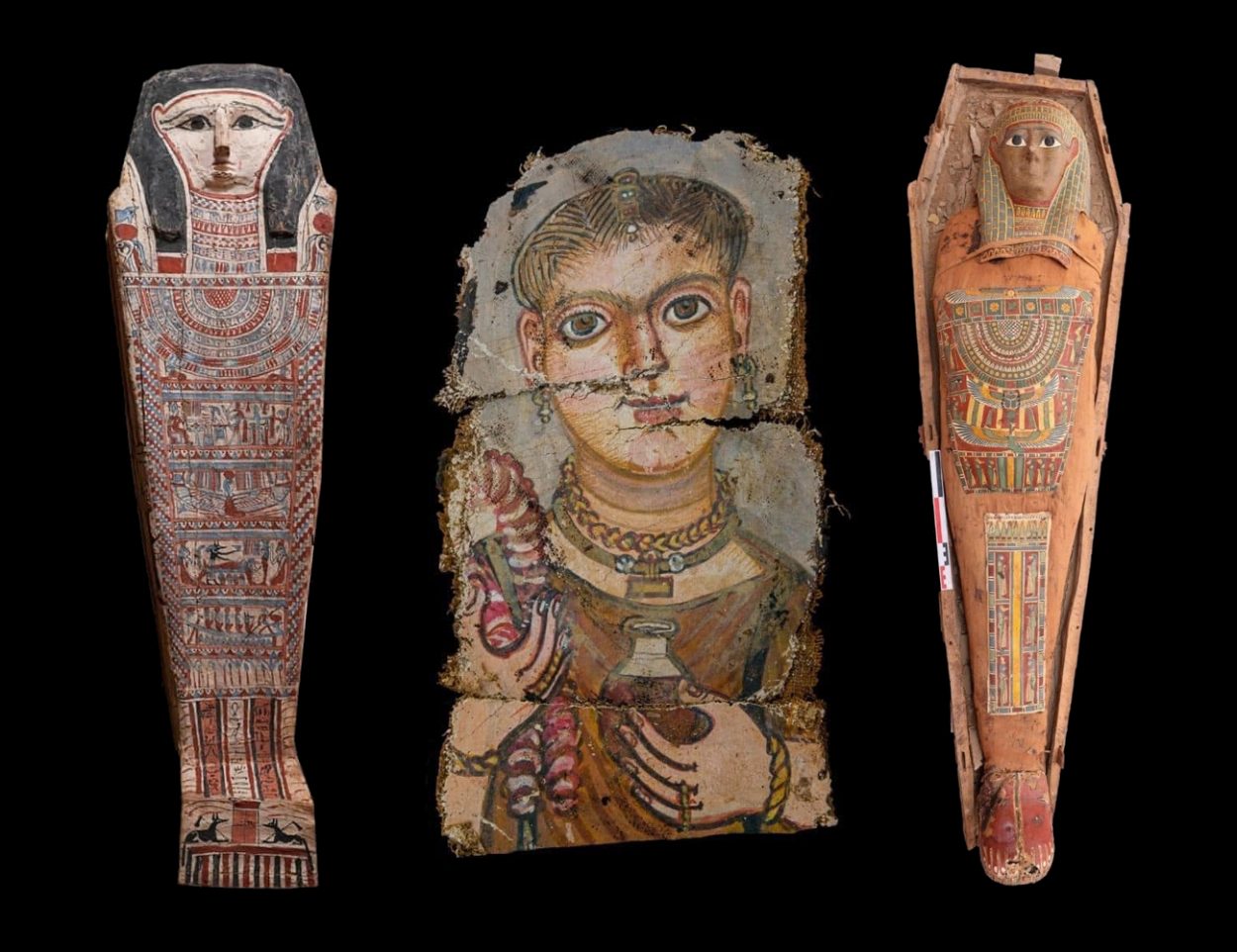Archaeologists excavating at the Garza archaeological site in Egypt’s Fayoum city, have uncovered a large funerary building and Fayoum portraits from the Ptolemaic and Roman period.
Faayoum (Shedet in Ancient Egyptian) was established in the Old Kingdom and was a cult centre for worshiping the crocodile gold Sobek. Under the Ptolemaic Kingdom, Faayoum was called Ptolemais Euergétis (later renamed Arsinoë) and became a centre for the Ptolemaic cult of Alexander the Great.
Archaeologists have been excavating the Garza archaeological site since 2016, with the latest season’s research uncovering a large funerary building. The structure is located in the Garza village, previously known as Philadelphia village, which was established in the third century BC as part of the agricultural reclamation project, implemented by Ptolemy II Philadelphus (309–246 BC).
The funerary building was constructed using stone blocks and contains numerous burial chambers either rock cut or lined with stone. The floor within the main structure is decorated with lime mortar and has coloured floor tiles that resemble a checkerboard.

Excavations have also revealed a multitude of finds, including richly decorated wooden coffins in both the ancient Egyptian and ancient Greek styles, ceramics, an ornate wooden box, and a number of portraits, popularly known as Fayoum portraits.
This is the first discovery of Foyoum portraits since excavations by British archaeologist, Flinders Petrie, during excavations in Hawara in 1887 and 1910–11, and excavations by German archaeologist, Von Kaufmann, who discovered the so-called “Tomb of Aline”.
Foyoum portraits are a type of naturalistic painted portrait on wooden boards attached to upper class mummies from Roman Egypt. They belong to the tradition of panel painting, one of the most highly regarded forms of art in the Classical world.
The team also found a terracotta statue depicting a syncretic Isis/Aphrodite within one of the wooden coffins, in addition to a preserved cache of papyrus documents inscribed in both Demotic and Greek script.
Ministry of Tourism and Antiquities
Header Image Credit : Ministry of Tourism and Antiquities





